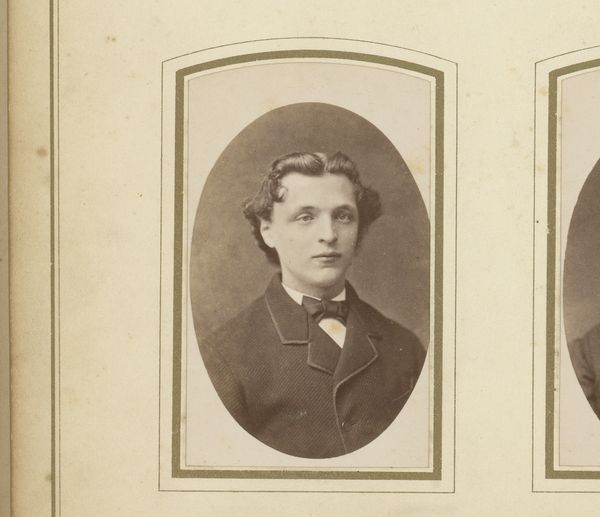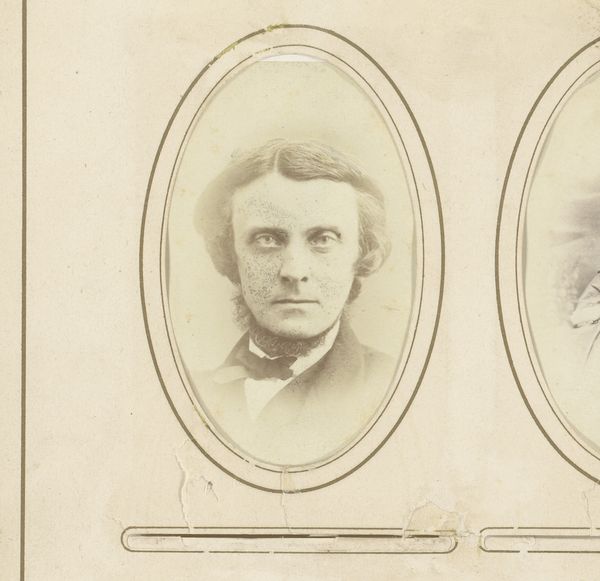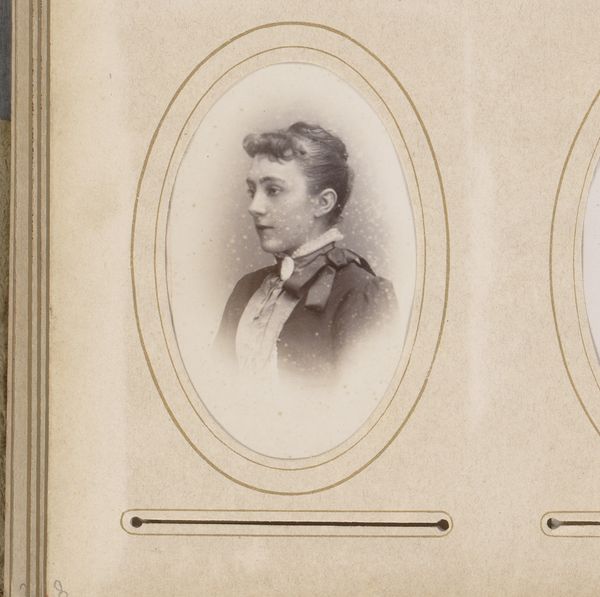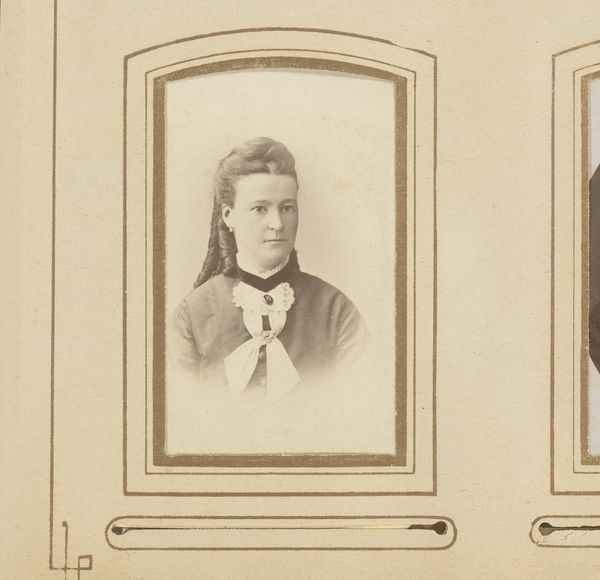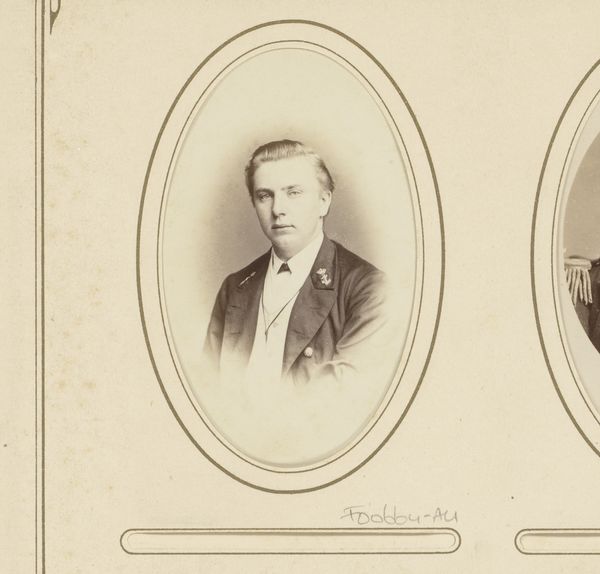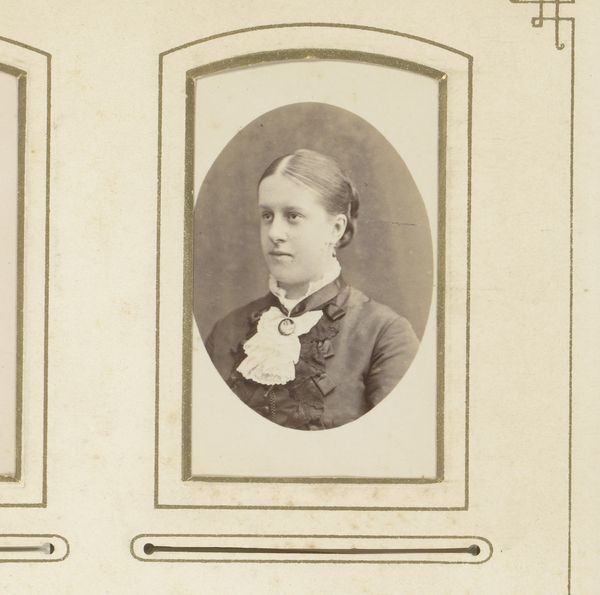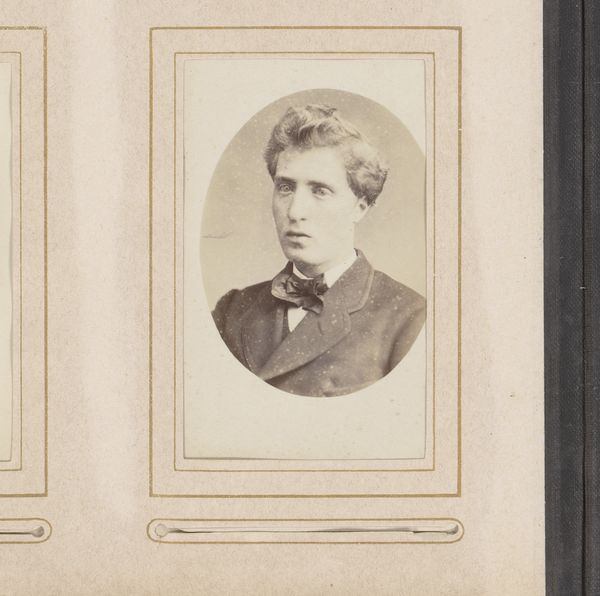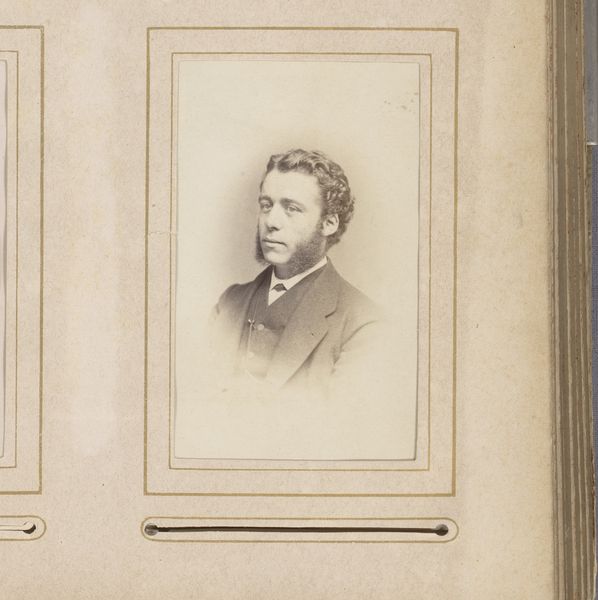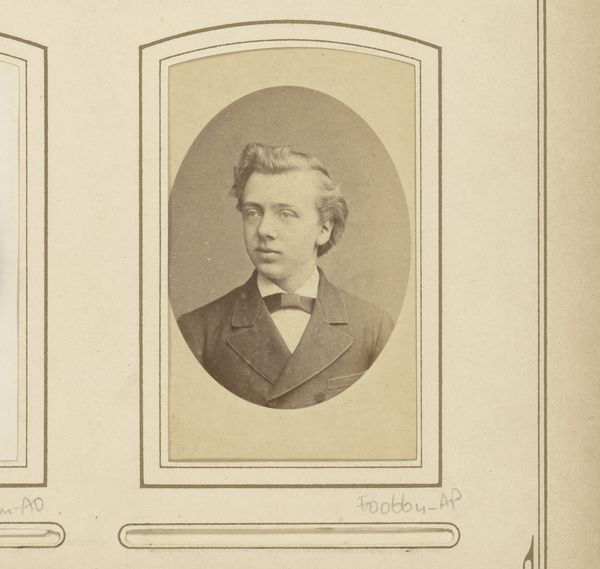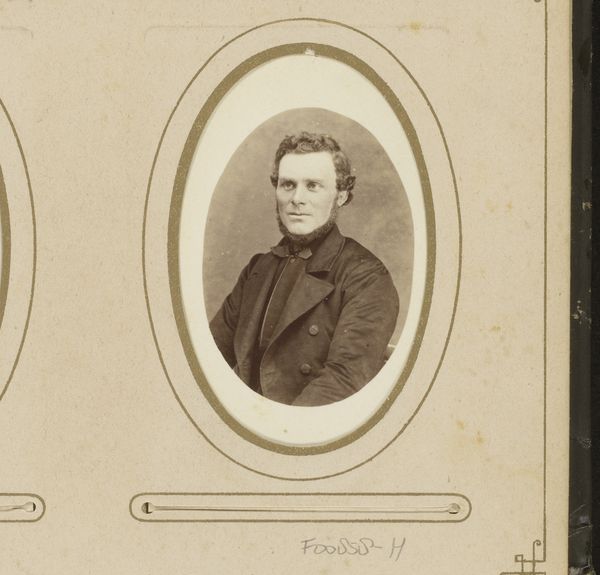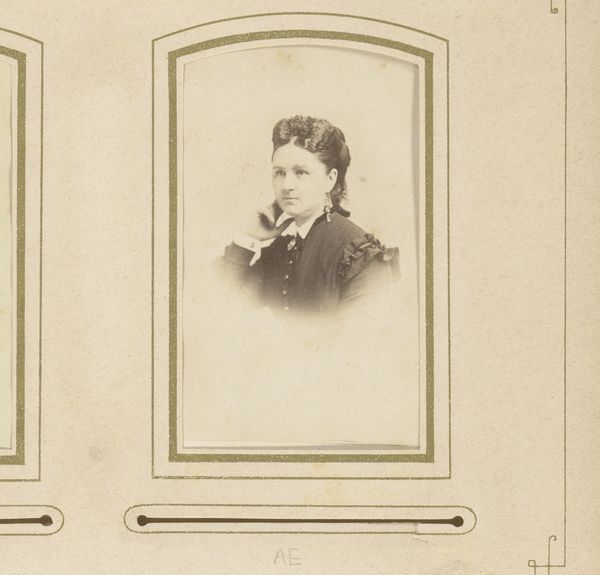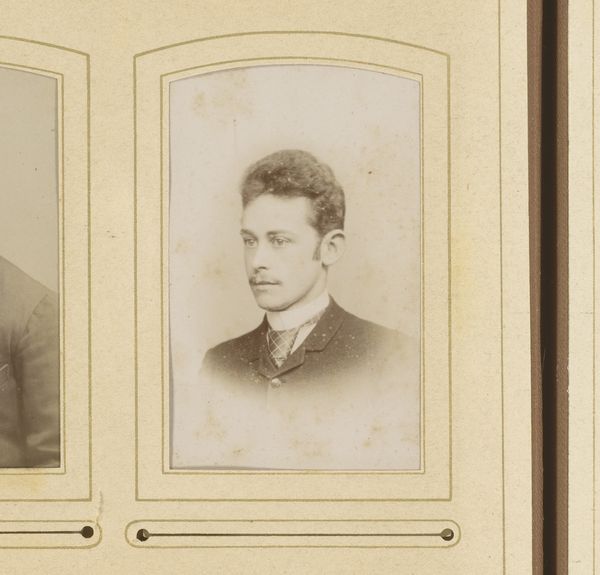
photography
#
portrait
#
photography
#
19th century
#
realism
Dimensions: height 87 mm, width 53 mm
Copyright: Rijks Museum: Open Domain
Curator: Here we have a portrait photograph, simply titled "Portret van een jonge man met vlinderstrik," which translates to "Portrait of a Young Man with a Bowtie." Its creation is placed between 1872 and 1879, with the photographer being Hendrik Anthonie Karel Ringler. Editor: What strikes me first is the sepia tone; it casts a melancholic, almost fragile aura. It reminds us of how much has happened historically between when it was taken and where we are now. Curator: Absolutely. This was the burgeoning age of accessible portraiture through photography. Think about the social implications. Suddenly, having your likeness recorded wasn't solely for the aristocracy. The working and middle classes now had this opportunity. Editor: Which brings us to the 'how' of its making. I'm interested in the photographic process and the sitter’s participation. The lighting must have required intense focus and patience to create this soft depth. His hair contrasts sharply with his expression; this photograph creates layers, right there. Curator: Indeed. We often romanticize the painter, but here the photographer has a vital role to play, navigating the technology to produce not just a visual record but also a work that conveys mood and class. Look at his clothes, clearly signifying his place within a social hierarchy of the late 19th century. He wanted to make the proper impression, of course. Editor: Considering that photographs like this were becoming relatively common at that time, did studios produce individual portraits or was mass production more common? And what influence did photographic technologies have on the painting tradition? Curator: That’s an excellent point! Photography both democratized and influenced painting, with its direct, representational method changing our perspective of traditional portraiture practices forever. Artists suddenly could no longer position themselves as unique producers of human likeness. Editor: A poignant and perhaps underappreciated example of this period. Thank you. Curator: My pleasure, it gives us a rich insight into the past while also helping us rethink art and visual technologies and their intertwined socio-political layers.
Comments
No comments
Be the first to comment and join the conversation on the ultimate creative platform.
